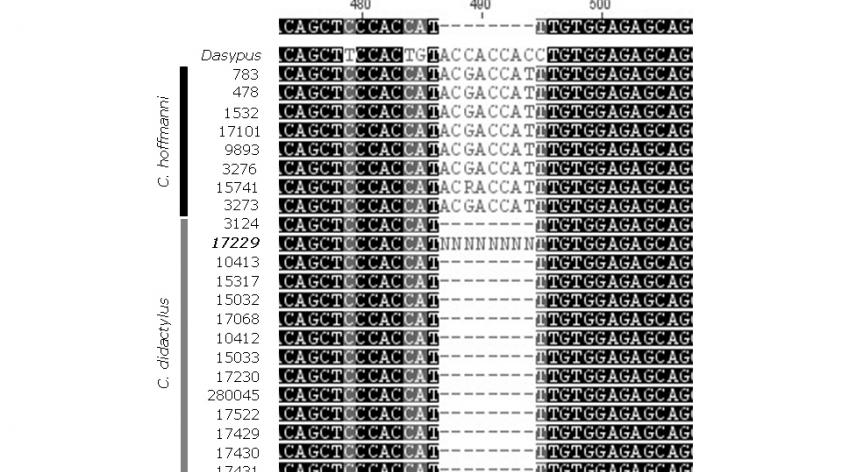
Using Sanger Sequencing to Save Species
The Conservation Genetics team at the Institute for Conservation Research aids the management of captive species through what is known as the Species Survival Plan (SSP). This program was established in 1981 by the Association of Zoos and Aquariums (AZA) as a cooperative effort to manage species in zoos and aquariums across North America. The Sloth SSP is one of the many programs that our lab supports by providing species identification and sex determination services using genetic techniques.
There are only two surviving species of sloths within the family Megalonychidae, the Hoffman’s C. hoffmanni and Linaeus’s C. didactylus two-toed sloth. They have an IUCN status of least concern in the wild, however, in the case of the Hoffman's two-toed sloth some populations are declining due to deforestation and illegal capture for the pet trade.
These two species share a part of their habitat range in South America, and there is ambiguity between the two species in external morphology such as body size and coat color. Furthermore, these two species can hybridize with one another, presenting a challenge for the captive breeding program in terms of preserving the species’ integrity within the captive population. The maintenance and breeding of these species in captivity is important for their long-term sustainability as popular zoo residents.
Our group designed a genetic test to differentiate between the two species by investigating two specific genes in the sloths’ genome: COI and ENAM. The COI gene is commonly used as a barcoding gene for species identification in many vertebrates due to its variable nature. The ENAM gene codes for the protein enamelin which is a vital component in mammalian teeth formation. This gene is typically conserved (less variable) among mammals, except for those with lost or modified tooth structure, which includes sloths!
Sloths have a reduced number of teeth with no enamelin (see more information here), making their ENAM gene variable enough to be used as a diagnostic marker for species-level identification. A technique called Polymerase Chain Reaction (PCR) amplifies these two genes from the sloths' genomes. The amplification product goes through a process called Sanger Sequencing that allows us to obtain the ACGT letters associated with the sequence of these genes. This information is then compared with a national database across other two-toed sloths sequences to confirm species identification.
A benefit of this simple method is that only a small amount of DNA is required to perform the test. The DNA is obtained when either a hair or a blood sample is sent to our lab through routine collection, both of which provide minimal stress to the animal. The results we provide the SSP are crucial for managing the captive populations of Hoffman's and Linaeus's two-toed sloth. Not only can we prevent hybridization between the two species through species-identification, but we help identify males and females for successful pairing of individuals for breeding. The Conservation Genetics division is dedicated to supporting programs where the use of genetic tools can improve the management of captive populations.
Please check out our research article published in the journal Zoo Biology for more information about our protocol: Steiner, C.C, M.L. Houck, O.A. Ryder. 2011. Species identification and chromosome variation of captive two-toed sloths. Zoo Biology 30. 623-635.













